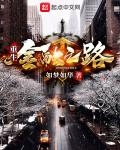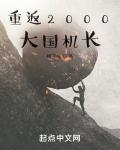Chapter 456 The wool comes from the sheep
Although Shirakawa Electric's annual press conference has ended, the discussion it left in the outside world has intensified.
Not to mention the technological updates of other old products, the various black technologies on the new products are simply dazzling.
The LCD technology that keeps pace with the times, the brand new screen display technology LED, and the revolutionary product mobile phone (cellular phone).
Especially the latter, which is Neon’s first independently developed mobile call technology.
Two or three years ago, Motorola 's mobile phone came out of nowhere and brought communication technology into the first generation of mobile communication systems.
The so-called first-era mobile communication system is what we usually call the 1G era.
However, there is no such thing as a few Gs now. This was added later by people who reversed the development of history.
Moreover, the 1G era was the era of analog communications, and before the mid-1980s it was the mainstream means of communication in the world.
Because it is an analog signal, mobile phones or brother-in-law at this time can only be used to make calls and can't do anything else.
For example, Shirakawa Electric's KITA-One mobile phone also uses analog signals and is a type of mobile phone.
Since it is an analog signal, it cannot be used to surf the Internet or send messages. So what is the LCD screen on the Shirakawa Electric mobile phone used for?
In fact, it is of no great use. It is just to make it easier for people to see the number they are dialing and to look through the address book.
Because of the internal integrated memory chip, Shirakawa Electric's mobile phone can store nearly 50 numbers.
This number is enough for people today. Of course, if you want more, you can buy the high-end version. Storing 200 is not a problem.
However, since it uses analog signals from the 1G era, what communication standard does Shirakawa Electric's mobile phone use?
Because of the frequency band obtained and the fact that United Communications has not yet developed its own communication format.
Therefore, the communication standard used by Shirakawa Electric mobile phones is the GSM format. Yes, this is not the communication technology in Japan.
The GSM standard originated in Ouzhou, and it has not yet been perfected. It was only this year that Ouzhou determined several key parameters of the GSM standard.
United Communications adopted this standard because its frequency band is very close to GSM, and its general technical framework has been determined.
Therefore, after NUCT (United Communications) expressed its intention to Ouzhou, the latter immediately incorporated NUCT into its own system.
The reason why Ouzhou agreed to NUCT's request so readily is that they are also well aware that it is a competition related to standards, and of course the more regions using it, the better.
You should know that at this time, it is not only , but the United States' CDMA is also in the works.
So with the initiative of the Neon region to throw itself into NUCT's arms, after the two sides signed an agreement, Ouzhou generously provided all the technical information about GSM to NUCT.
Therefore, after some internal modifications, NUCT (United Communications) used GSM, which was supposed to be a 2G technology, as a simplified version of 1G.
Data legends and the like are completely useless on today's mobile phones. This is just a transitional technology.
NUCT's plan was to wait until GSM was officially put into commercial use, which would be around the beginning of the 1990s, so that it could smoothly transition to the 2G era.
Moreover, as an international communication standard, there will be many countries using GSM in the future, such as neighboring China, Ouzhou, Australia and other regions.
As long as the country uses the GSM format, it will be a potential customer market for Shirakawa Electric mobile phones in the future.
Baichuan Feng is very ambitious. He is not only eyeing the small market in Neon, his ultimate goal is to go global.
If Xiaomi's CDMA 2G development had not been a little late at this time, NUCT might have switched to CDMA.
Of course, in the future NUCT will not rely solely on GSM.
It remains to be seen whether NUCT will embrace CDMA in the future for a broader market. NUCT is even developing its own communication standards, such as PHS technology.
This PHS technology, which later became very popular in China, was only popular for a short period of time.
However, as a low-end communication method, it can better segment and supplement the NUCT market.
After all, no one stipulates that an operator can only use one communication format. Almost all of China's three major operators are compatible with three to four communication standards.
In short, after obtaining GSM technology and making some modifications to it, NUCT began to build base stations on a large scale in major cities in Japan.
Knowing that GSM technology will be used until the end of the 2G era, NUCT is willing to invest in Kyushu, Shikoku, Kanto, Kansai, Tohoku, and Hokkaido.
In the above-mentioned areas, NUCT has set up its own communication base stations in major cities.
Such large-scale infrastructure projects cost tens of billions of dollars.
Fortunately, since it is infrastructure that benefits the people, the Ministry of Posts and Telecommunications also subsidizes about 40% of the total investment cost.
Yes, nearly half of NUCT’s total investment in the communications industry is subsidized by the government.
At this time, the Japanese government had more money than it could spend, and it bought tens of billions of US dollar reserves just to cool down the yen.
Coupled with the annual trade surplus, the accumulated money has nowhere to be spent except on buying U.S. bonds.
It just so happened that NUCT began to take the lead in large-scale wireless communication base station construction, and Shirakawa Kaede took advantage of the relationship with the Meiji academic clique.
The Ministry of Posts and Telecommunications directly took out more than 40 billion yen in funding and threw it in NUCT's face.
Boy, I have confidence in you. You must do this kind of thing that benefits the country and the people on a big scale!
In response, Shirakawa Kaede said, Postal dad, please insult me again~
Of course this is a joke. In any case, in an era when the government is not short of money, NUCT receives a lot of subsidies.
The fact that the government has money is one thing, but the key factor is the efforts made secretly by the Meiji academic cliques within the government system.
Otherwise, if NUCT only relies on itself, it really doesn’t have that much face.
The protection of interests is complicated.
In places that ordinary people cannot see, Shirakawa Holdings Group has given the Meiji Group feedback that ordinary people can hardly imagine.
Only through mutual cooperation, common interests and deep integration can we ensure that this relationship will last for a long time.
With the connection of various links, NUCT finally completed the construction of base stations in most areas within one year.
As for the construction of base stations in remote areas or mountainous areas, it is always said that there is some loss in the cost. NUCT plans to complete these gradually in the next few years.
It is precisely because the construction of base stations in densely populated areas has been completed that Shirakawa Kaede will directly broadcast a live broadcast at the press conference.
Nothing is more convincing than seeing it with your own eyes and hearing it with your own ears.
Sure enough, the Shirakawa Electric press conference came to an end.
Several media outlets in Japan were competing to report on the news about Shirakawa Electric's portable phone, and the scene of Shirakawa Kaede talking on the phone with Akina Nakamori at the press conference was widely circulated.
In the words of the media, Shirakawa Electric - the light of neon!
In the field of mobile communications, it has filled the gap in domestic terminals and is even more powerful than the old-fashioned NTT.
That design, which is half the size of the Motorola, is undoubtedly more in line with the aesthetic taste of the Japanese.
On the day when the Shirakawa Electric launch conference just ended, the door of the NUCT sales hall was crowded with people who came to try out the new products.
However, most of the first batch of people who bought KITA One mobile phones were businessmen. Because of their work, they naturally had a great demand for mobile phones.
After completing the network registration procedures at a NUCT store, a company president couldn't wait to call home.
After hearing his wife's clear response on the other end of the phone, the president immediately smiled.
This is so convenient. It really works as advertised. Connect you and me anytime, anywhere.
With the promotion of this live signboard, the people watching at the scene could no longer hold back.
They swarmed around the counter and started buying Shirakawa Electric's new mobile phones.
The price of 430,000 yen is indeed expensive, but most people can afford it, after all, it is enough for a month's salary of a freshly graduated college student.
Besides, this is a communication tool and it will be fine to use it for years to come.
What’s more important is that Shirakawa Electric and NUCT have done a great job in advertising, not to mention the repeated bombardment on TV stations.
It was that unique scene at the press conference that made the media talk about it for a long time.
"United Communications connects you and me!" Even every child can say this slogan now.
Tsk, people in the bathing era don’t feel bad at all when it comes to spending money.
Within two days, all the stock on the NUCT store counters was cleared out.
As a last resort, Shirakawa Electric had to replenish stocks urgently to fill the market gap.
This kind of rush to buy scene has not appeared for a long time for Shirakawa Electric.
Now, Shirakawa Electric's portable mobile phones have become a symbol of status.
Anyone walking on the street with a Shirakawa Electric mobile phone on their waist will attract a few glances from passers-by.
When President Sang put his cell phone on the table, the people who were negotiating with him at the same table also looked at him with respect.
The Japanese in the golden age were inflated and proud, and they urgently needed recognition from others.
As a way to show status, Shirakawa Electric's mobile phones quickly became popular among people.
As a first-generation mobile phone, there is no doubt that the price of 430,000 yen is actually on the high side.
If we only consider the hardware cost, a mobile phone does not exceed 20,000 yen.
The most valuable are just those few chips, and their prices will gradually decrease as the shipment volume increases.
However, the reason why it is so expensive is because it includes part of the NUCT package fee.
You buy a mobile phone to use it, so you have to pay the phone bills.
However, if you buy a Shirakawa Electric phone, you don’t have to worry about phone bills at least in the first few months, as this cost is already included in the contract.
The wool comes from the sheep. In addition to the prepaid phone bills, the cost of NUCT base station construction must be recovered.
And Shirakawa Electric must have made a profit too. Most of the 430,000 yen profit was divided between Shirakawa Electric and NUCT.
When the number of users accumulates and the production technology becomes more mature, Shirakawa Electric will start to significantly reduce the price of the next generation of mobile phones.
However, the various package fees for contract phones will also be prepared.
It will make users seem like the phone doesn't cost much, but within a few years they will have no choice but to be NUCT users.
The so-called profit was just divided into many months and slowly recovered over a few years. In fact, the money earned was not reduced at all, and even more.
Inspired by Shirakawa Electric and NUCT, NTT, a veteran telecommunications player, also launched its own portable phone a month or two later.






